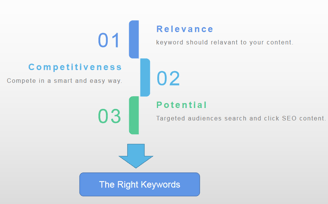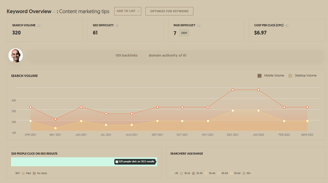On-page SEO Checklist: What You Need to Know
This checklist is designed to help you improve your on-page SEO. It's based on the latest best practices from Google.
SEO CHECKLIST
1. Find The Right Keywords
When it comes to finding the right keywords, there are a few things you need to take into account.
The first is relevance – make sure the keywords you target are relevant to your content.
The second is competitiveness – make sure there’s not too much competition for those keywords.
And the third is potential – make sure your target audience is actually searching for those keywords and click the SEO content.
There are a number of different tools and techniques you can use to find the right keywords.
One of the most popular is the Google AdWords Keyword Planner. This tool allows you to see how often particular keywords are being searched for, as well as how competitive they are.
Another great tool for finding keywords is Google Trends. This tool lets you see how popular particular keywords are over time. This can be helpful in determining whether a keyword is growing in popularity or declining.


How do I identify your audiences are clicking the SEO SEPR on Google?
Here is the result from the Ubersuggest keyword overview: the "content marketing tips" is showing that 320 people click on SEO results.


2. Assign keywords to your page and record them
When you write your website's content, it's important to use one keyword phrase per page. This will help you rank higher in search engine results pages (SERPs), and it will make your website easier for customers to find.
But how do you choose the right keyword phrase? And once you've chosen it, how do you make sure that all of your content is optimized for that keyword?
Here are a few tips:
Choose a keyword that accurately describes the topic of your page.
Make sure that the keyword is relevant to your business.
Research the competition for your chosen keyword phrase.
Use the keyword throughout your page, including in the title, in the body text, and in the meta tags.
Monitor your website's search engine rankings and adjust your content as needed.
It is important to record what keywords you have used. You can list them out in your Excel. Do not duplicate your keywords.
3. Discover more similar keywords.
When it comes to SEO, you know the importance of using keywords throughout your website. But what about finding related keywords or LSI (Latent Semantic Indexing) keywords to add to your content? These are keywords that are related to your main keyword and can help you rank higher on search engine results pages (SERPs).
One way to find related keywords is to use Google’s Keyword Planner. This tool allows you to see how many people are searching for a particular keyword each month, as well as other related keywords. You can also use Google Trends to see if a particular keyword is increasing or decreasing in popularity.
Another great way to find related keywords is by using a tool like semrush.com. This tool allows you to see which websites are ranking for a particular keyword, as well as other related keywords.